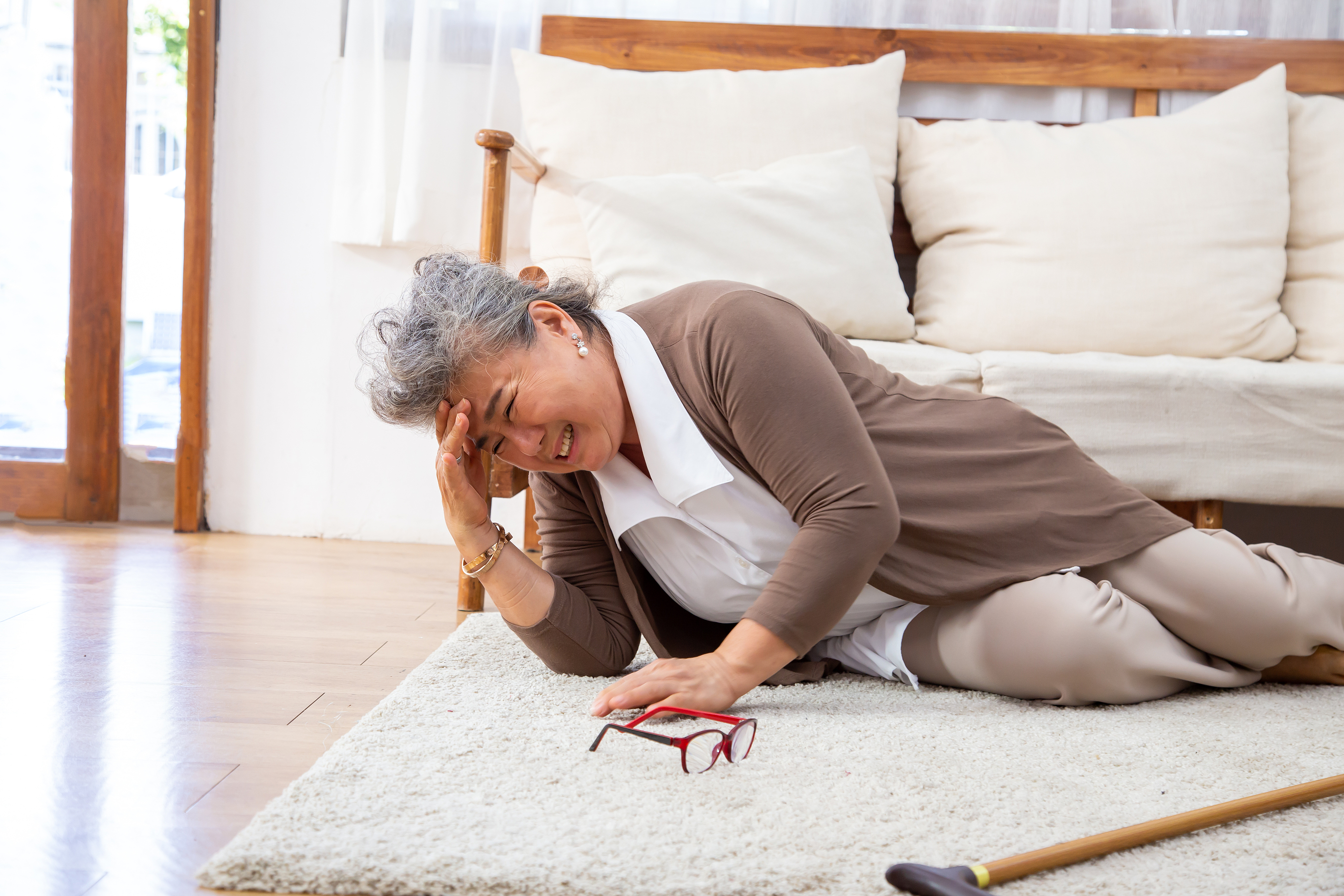Recognize the Signs and Symptoms of a Stroke
Recognize the Signs and Symptoms of a Stroke
According to the World Health Organization, stroke is the third leading cause of death worldwide and a major cause of disability. There are two main categories of a stroke: ischemic and hemorrhagic. An ischemic stroke occurs when an artery that supplies blood to the brain becomes blocked. A hemorrhagic stroke occurs when an artery in the brain bursts and bleeds into or around the surrounding tissue.

Symptoms of a stroke include:
- The sudden onset of a severe headache
- Sudden weakness or numbness, especially on one side of the body
- Trouble understanding speech or speaking
- Sudden confusion, dizziness, or loss of coordination
- Loss of balance or difficulty walking
- Difficulty seeing in one or both eyes
These signs and symptoms signal the need for immediate medical assistance, even if the symptoms only last for a few minutes. Rapid recognition and treatment of a stroke lead to higher survival rates and lower disability rates.
The severity of a stroke may range from minor to moderate or severe, and individuals who survive a major stroke generally require intense rehabilitation, including physiotherapy, that focuses on helping people improve their quality of life and work towards regaining their independence. Post-stroke rehabilitation cannot reverse damage to the brain tissue, and some people do not regain full independence, but physiotherapy can help survivors achieve better physical and mental outcomes.
The extent of a person’s potential disability following a stroke depends on what part of the brain was damaged and how much damage occurred. The brain has four lobes: frontal, parietal, temporal and occipital and is divided into two hemispheres (right and left), each controlling functions on the opposite side of the body, and specializing in different cognitive tasks, though both sides work together.
The left hemisphere is generally associated with language, logic, analytical thinking, and sequential processing. The right hemisphere is generally associated with spatial reasoning, creativity, intuition, and holistic processing.
A stroke that occurs on one side of the brain typically affects the opposite side of the body, often causing weakness or numbness on the affected side, the loss of feeling on one side of the face, arm, or leg, or vision problems in one eye. Research also shows that left-sided strokes are more common than right-sided strokes, probably because strokes that occur in the left-brain region are linked to clearer physical signs and symptoms, such as:
- Paralysis on the right side
- Speech and language deficits
- Sensory impairments on the right side
- Issues with thinking and memory
- Slower movements
A stroke that occurs in the right brain region may lead to:
- Paralysis on the left side
- Vision problems
- Sensory deficits on the left side
- Impulsive behavior
- Difficulties with memory and thinking
If a stroke occurs in the brain stem, the middle of the brain near the spinal cord, both sides of the body may be affected. Furthermore, a stroke of any type may lead to different forms of disabilities, including:
- Thinking and memory impairments
- Partial or complete paralysis (especially on one side)
- Sensory problems (loss of sensation, vision or hearing issues)
- Difficulty understanding language or speaking
- Emotional and behavioral disturbances
In some cases, a severe stroke may cause a ‘locked-in’ state, where the individual is conscious, can hear, comprehend, think, and blink but cannot move or speak.
If you or a loved one has experienced a stroke, the physiotherapists at Emerald Hills Physio & Sports Clinic can discuss post-stroke management options that best accommodate your specific needs. Upper and lower extremity exercise following a stroke is beneficial in improving mobility and motor recovery. Physiotherapy also combines different approaches, such as functional electrical stimulation or magnetic stimulation, in addition to guided exercise, to help promote recovery. With time and patience, physiotherapy can help stroke survivors to address the effects of a stroke.
The month of May is National Physiotherapy Month in Canada, where the Canadian Physiotherapy Association became one of the founders of World Physiotherapy. This international organization focuses on discussing the best practice methods that support positive outcomes. During National Physiotherapy Month, emphasis is placed on increasing awareness of this field and the need for innovative physiotherapy approaches in rehabilitation, including post-stroke management.
References
- World Health Organization. The top 10 causes of death. 2024. https://www.who.int/news-room/fact-sheets/detail/the-top-10-causes-of-death
- Feigin VL, Owolabi MO. Pragmatic solutions to reduce the global burden of stroke: a World Stroke Organization–Lancet Neurology Commission. Lancet Neurol. 2023;22(12):1160-1206.
- Johnson MM. Stroke and CT perfusion. Radiol Technol. 2012;83(5):467CT-486CT.
- Romans L. Neurologic imaging procedures. Computed Tomography for Technologists: A Comprehensive Text. Baltimore, MD: Lippincott Williams & Wilkins; 2011: 239-266.
- Latchaw RE, Alberts MJ, Lev MH, et al; American Heart Association Council on Cardiovascular Radiology and Intervention, Stroke Council, and the Interdisciplinary Council on Peripheral Vascular Disease. Recommendations for imaging of acute ischemic stroke: A scientific statement from the American Heart Association. Stroke. 2009;40(11):3646-3678.
- O'Dell MW. Stroke rehabilitation and motor recovery. Continuum (Minneap Minn). 2023;29(2):605-627.
- Portegies MLP, Selwaness M, Hofman A., et al. Left-sided strokes are more often recognized than right-sided strokes: the Rotterdam study. Stroke. 2015;46(1):252-4. doi: 10.1161/STROKEAHA.114.007385.
- Tsai CF, Thomas B, Sudlow CL. Epidemiology of stroke and its subtypes in Chinese vs white populations: a systematic review. Neurology. 2013; 81(3):264-272.
- Halan T, Ortiz JF, Reddy D, et al. Locked-in syndrome: A systematic review of long-term management and prognosis. Cureus. 2021 Jul 29;13(7):e16727. doi: 10.7759/cureus.16727